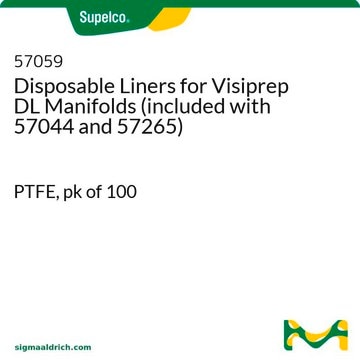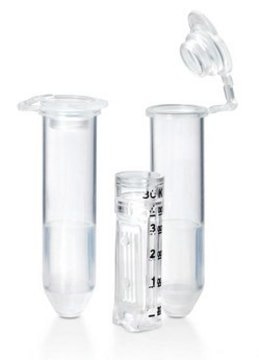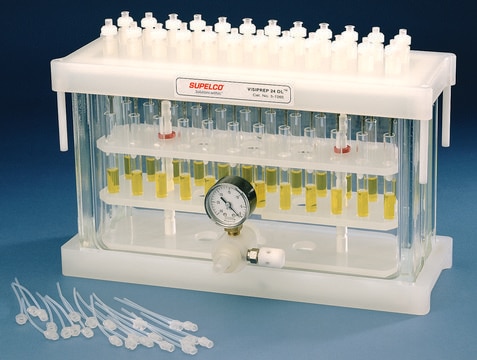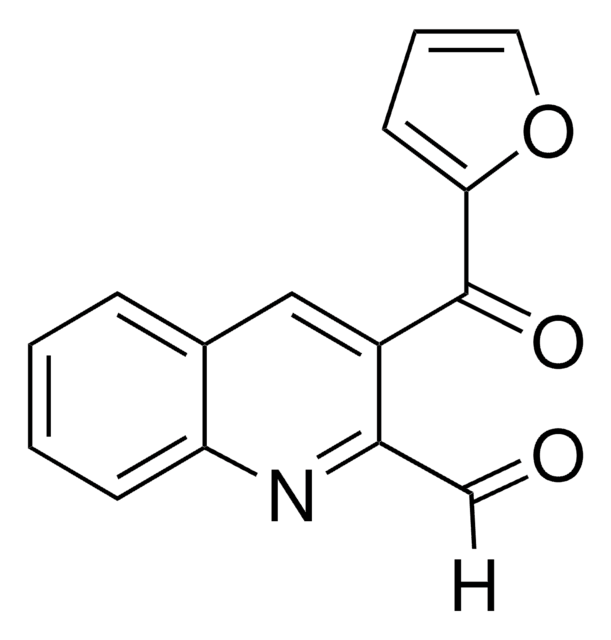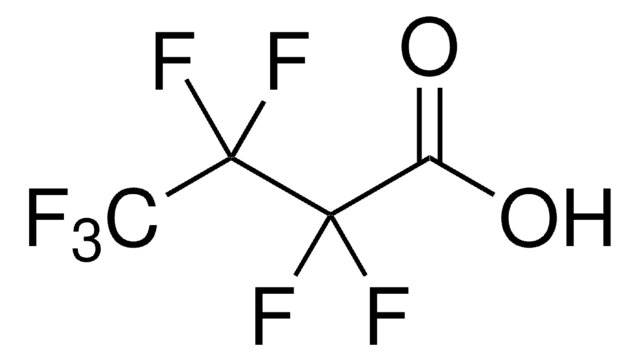Recommended Products
Quality Level
fluorescence
λex 503 nm; λem 627 nm±10 nm in 0.1 M bicarbonate buffer pH 8.3
storage temp.
−20°C
Related Categories
General description
Chromeo P503 labels proteins and peptides by exhibiting a color change from blue to red upon binding to primary amines. Chromeo P503 displays a weak fluorescence with a quantum yield <1% in solution. After conjugation to a primary amine group, the label undergoes a shortwave spectral shift of >100 nm and the quantum yield rises to 50%. This property allows a distinct detection of primary amines, proteins, and other biomolecules.
Application
Chromeo P503 is used as a fluorogenic reagent to label primary amine groups within molecules such as proteins. Chromeo P503 labeled proteins may be studied in a variety of gel electrophoresis and chromatographic applications.
Caution
To ensure stability, the lyophilized dye should be stored at 4°C in the dark. This product is guaranteed for 6 months from the date of arrival.
Legal Information
Chromeo is a trademark of Active Motif Chromeon GmbH
wgk_germany
WGK 3
flash_point_f
Not applicable
flash_point_c
Not applicable
ppe
Eyeshields, Gloves, type N95 (US)
Certificates of Analysis (COA)
Search for Certificates of Analysis (COA) by entering the products Lot/Batch Number. Lot and Batch Numbers can be found on a product’s label following the words ‘Lot’ or ‘Batch’.
Already Own This Product?
Find documentation for the products that you have recently purchased in the Document Library.
Stephanie de Jong et al.
Analytical chemistry, 83(16), 6330-6335 (2011-07-07)
Methods of kinetic capillary electrophoresis (KCE) facilitate highly efficient selection of DNA aptamers for protein targets. The inability to detect native proteins at low concentrations in capillary electrophoresis creates, however, a significant obstacle for many important protein targets. Here we
Lauren M Ramsay et al.
Electrophoresis, 30(2), 297-302 (2009-02-11)
We have coupled CIEF with an LIF detector that is based on a post-column sheath flow cuvette. We employed Chromeo P503 as a fluorogenic reagent to label proteins before analysis. This reagent reacts with the epsilon-amine of lysine residues, preserving
Emily H Turner et al.
Journal of chromatography. A, 1194(2), 253-256 (2008-05-17)
The spectroscopic and electrophoretic properties of proteins labeled with Chromeo P503 were investigated. Its photobleaching characteristics were determined by continually infusing Chromeo P503-labeled alpha-lactalbumin into a sheath-flow cuvette and monitored fluorescence as a function of laser power. The labeled protein
Jane A Dickerson et al.
Electrophoresis, 31(15), 2650-2654 (2010-07-07)
CIEF and CZE are coupled with LIF detection to create an ultrasensitive 2-D separation method for proteins. In this method, two capillaries are joined through a buffer-filled interface. Separate power supplies control the potential at the injection end of the
Our team of scientists has experience in all areas of research including Life Science, Material Science, Chemical Synthesis, Chromatography, Analytical and many others.
Contact Technical Service